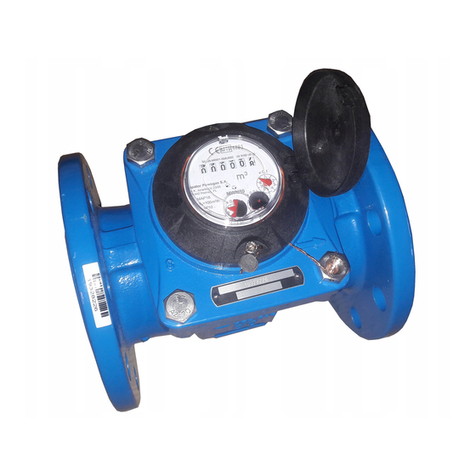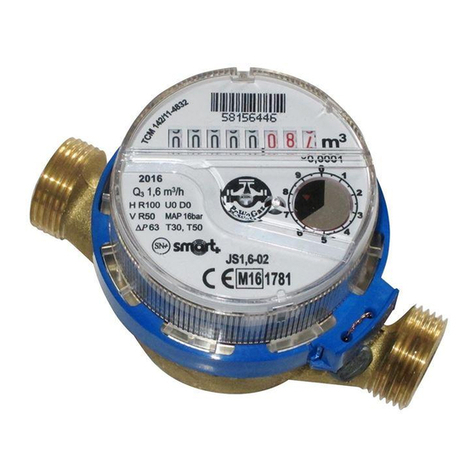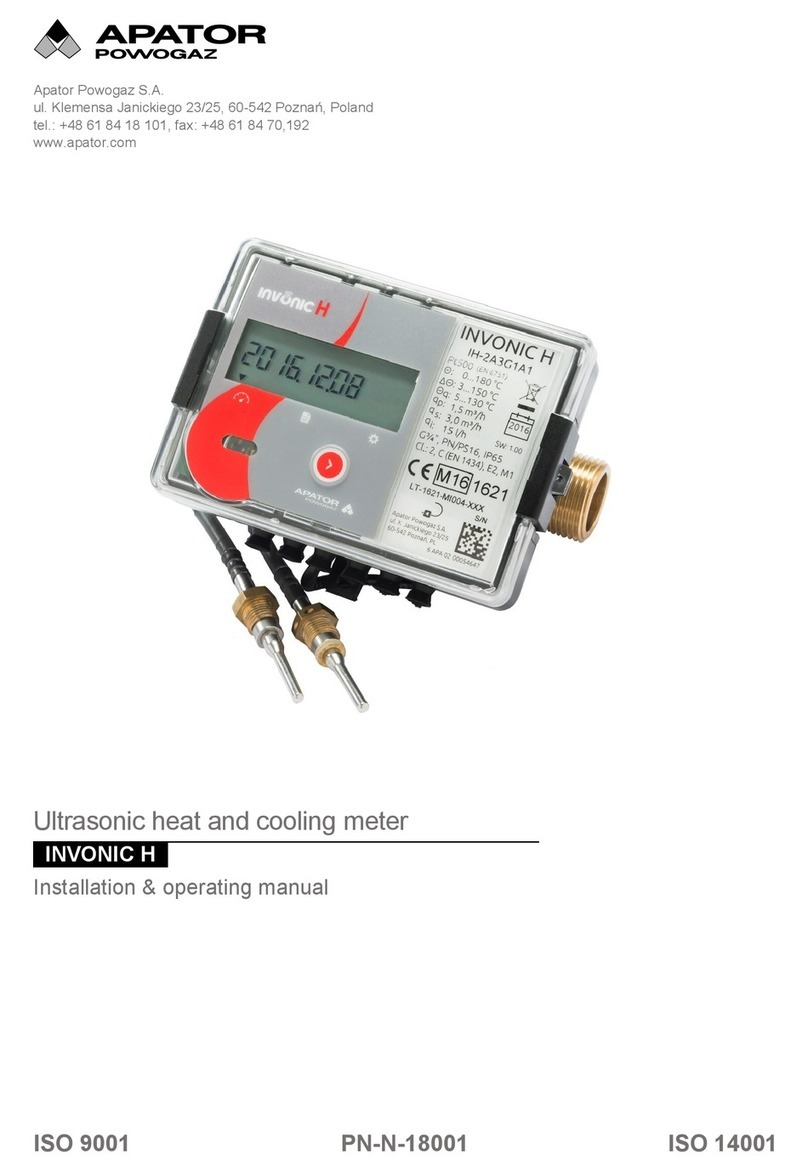SV-RTK - Instruction manual
Page 4 of 10
▪Directive 2004/22/EC of the European Parliament and the European Council of 31 March 2004
(Measuring Instruments Directive –MID)
▪EN 14154 standards harmonised with directive 2004/22/EC of the European Parliament and the
European Council of 31 March 2004
▪ISO 4064 –Measurement of water flow in conduits. Water meters for cold potable water
▪OIML R49 –Water meters intended for the metering of cold potable water and hot water
The basic requirements regarding the installation of water meters can be found in standards:
▪EN 14154-2: Installation and operating conditions
3.Description of proper water meter operation
The volumetric water meters type SV-RTK are designed to measure, memorise and display the volume at
metering conditions of water passing through the measurement transducer in the sense of the Directive
2004/22/EC of the European parliament and the European Council of 31 March 2004, as amended.
The water meters type SV-RTK are positive displacement meters with rotary piston.
The water meters type SV-RTK consist of a brass casted body with connecting threads and inlet strainer, a
wet measuring unit, a pressure plate, an o-ring, a gasket, a screwed plate a dry mechanical indicating device
(standard counter) and clamp on plastic cover.
The measuring unit consists of an internal strainer, a piston chamber with plastic shaft with stainless steel
holder, a bush, a plate, a piston with stainless steel shaft, a piston chamber cover, an o-ring, a transmission
shaft with magnetic holder.
The mechanical indicating device, dry (standard counter), are formed by numbered rollers with eight drums
and one rotary pointer. There is star wheel with six arms which can be used for rapid testing in mechanical
indicating device.
4.Choosing the right water meter size
The main criterion for choosing the right water meter size (nominal diameter) should always be the water
meter working conditions, that is the average and maximum value of a passing water working flow.
When a water meter is too large, it does not only increase the investment cost, but also has lower accuracy
in cases of small water flow.
A too small water meter can cause its overload, and simultaneously quicken the wear of its active parts.
In order to ensure that the water meter works within its measurement range and the acceptable accuracy
error ranges, you have to specify the scope of its work during the day, or define this scope based on the
monthly water consumption, taking into account the minimum and maximum values of flow rate.
It is recommended to choose the size of the water meter so that the size of the largest expected flow rate in
the system is between 0.5 and 0.7 of the water meter constant flow rate Q3.
Values of constant flow rate Q3 for a given type of water meter were provided in table 3. Using the correct
type of water meter depends also on the temperature, water pressure, water meter conditions of installation






























